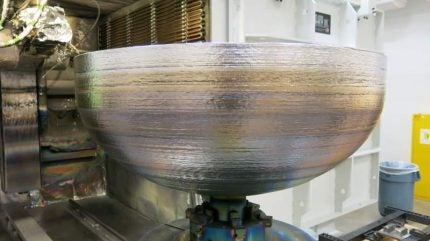
Lockheed Martin has completed the final rounds of quality testing of a titanium tank built using 3-D printing technology to store fuel on board satellites.
The test was conducted to demonstrate the high tolerance and repeatability of the tank, which includes two 3D printed domes that serve as caps,and a variable-length, traditionally-built titanium cylinder that forms the body.
The domes were built at Lockheed’s facility in Denver, Colorado, US, using Electron Beam Additive Manufacturing.
With a 46-inch diameter, the high-pressure tank is the largest 3D printed object produced by Lockheed.
The product of a multi-year development programme, the technology has enabled Lockheed to reduce the total delivery timeline of the tanks from two years to three months.
The cost of the satellite and schedule to build the domes has also been reduced by 50%.
Lockheed Martin Space executive vice-president Rick Ambrose said: “We self-funded this design and qualification effort as an investment in helping our customers move faster and save costs.
“These tanks are part of a total transformation in the way we design and deliver space technology. We’re making great strides in automation, virtual reality design and commonality across our satellite product line.
“Our customers want greater speed and value without sacrificing capability in orbit, and we’re answering the call.”
The newly printed tank is designed to meet the performance and reliability required by Nasa.
It will be used by Lockheed as a standard product option for its LM 2100 satellite buses.


